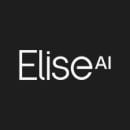Ten, maybe even five years ago, New York City was synonymous with media and finance.
While the Financial District’s Charging Bull still stands strong, tech has reached an increasing level of importance to the city and its economy.
According to a report by Tech:NYC and the Center for an Urban Future, the tech sector is NYC’s most reliable source of new, well-paying jobs.
The industry has taken a decade-long path to reach that point. Since 2010, tech jobs have grown at a rate of 142 percent, according to the same report. The sector grew seven times faster than the Big Apple’s economy overall, and 17 times as fast as finance.
Startup growth is booming in the industry’s hottest fields, like climate tech, healthtech and artificial intelligence.
New York City tech companies weren’t immune to the shaky few months the industry has experienced recently. But right now, NYC is weathering the storm. It’s the top metro area in the U.S. for tech job postings according to CompTIA’s monthly jobs report: 16,205 tech jobs were posted in January, nearly 3,000 more than December.
Out of the 4,923 jobs posted on Built In NYC, 1,468 are for developers and engineers, by far the largest sector, and 276 are for product professionals. Built In NYC sat down with tech leaders from four companies currently hiring to find out the skills that stand out the most in the hiring process and what new hires can look forward to accomplishing this year.
Headway is building a more accessible mental healthcare system with a software-enabled network of therapists who accept health insurance. That makes it easier for people to find quality in-network care by removing barriers like cost.
The pen is mighty: In Headway’s document-driven culture, written communication skills are a must. “Major decisions start and end with a crisp, shareable, single source of truth in the form of a shared document,” Hackett said. The product team is trusted to drive the business forward without approval along the way. Their decisions affect every team at Headway and the company’s success, so candidates need to concisely provide context that everyone can run with.
Ease for patients and providers: To achieve their mission of accessible mental healthcare for all, Headway’s product team must help providers spend less time on the headaches of running a business, like dealing with insurance companies, and more time providing care. That means this year, they’re not making a singular, large-scale investment, but rather a series of smaller investments that double down on their work to make life better for mental health providers.
New platform systems will predict when an insurer’s systems give bad data about benefits. That way, Headway can ensure patients know what they’ll pay for care. “It also means untangling the confusing web of compliance requirements with machine learning models so providers know they are keeping the right records to get paid on time,” Hackett said.
Relentless focus on scale: In one word, Hackett describes Headway as tenacious. “Making insurance feel simple for patients and providers requires relentless focus on a few core problems,” he said. “We must consistently get better and build more sophisticated systems to solve the same core problems at increasing scale. It requires a lot of tenacity to avoid distraction, and our team has it in spades.”
Using data science and consumer-friendly tools, Garner Health works with employers to get their employees into the highest-quality healthcare providers.
Well-rounded coders: Moore is looking for talented coders. But he also wants to see how candidates connect the code they write to the rest of the ecosystem — from the infrastructure, to the database, to the UI — to drive a positive outcome for Garner’s users. “When we say we’re looking for full stack engineers, we say this expansively,” Moore said. “We want to hire people who know how to get the most out of the tech stack and are eager to leverage that to transform the healthcare economy.”
Super features: Garner is growing, and this year, Moore’s team plans to launch a slate of features to reduce strain on the concierge teams and deepen the capabilities of the app. “We’re building new tools to give our concierge team superpowers, integrating with financial institutions to get our members paid more quickly and evaluating how we can use AI to answer basic questions for members,” Moore said.
Be better, together: Moore describes his team as “a collaborative bunch.” To get the best perspective on how to develop a feature correctly, the engineering team always works in multidisciplinary teams with product managers, designers or data scientists. On a team level, engineers bounce ideas off each other and learn together. For instance, a group of engineers have formed a study group to learn the finer points of REST API design. “Every other week, they get together to discuss books or blog posts on different approaches to building great APIs,” Moore said.
EliseAI’s artificial intelligence assistant automates customer conversations across email, text, webchat and phone to help businesses elevate their customer service experience.
Creative independence: At EliseAI, successful engineering candidates must exhibit a bias for action, an ability to learn fast and a desire to take ownership. St Pierre’s engineering team strives to rapidly deliver technical features to gain insightful feedback from clients quickly. “It’s not uncommon for us to go from idea to proof of concept to MVP in just a few weeks,” St Pierre said. “The ability to work independently, think creatively and adapt quickly to new information and changes is crucial for success on our team.”
New answers and use cases: To address challenges in the housing space like resident conversations and maintenance requests, and to break into new industries like healthcare, EliseAI will expand its product offering in 2023. “This will require us to stretch the possibilities of our current system and bring new products from zero to one,” St Pierre said.
Out of the box: The tech team is ambitious. Engineers value continuous growth and take on challenging projects that drive innovation and push the boundaries of what’s possible. “We encourage taking risks, embrace failure as a learning opportunity and work collaboratively to achieve our goals,” St. Pierre said.

With EnergyHub’s platform, consumers can turn their smart thermostats, electric cars and other IoT devices into virtual power plants.
Hustle hard: Engineering candidates who show a passion for EnergyHub’s work separate themselves from the pack during the interview process. “Even if they lack some part of the exact experience we’re searching for, we’ve seen engineers succeed when they’re willing to dive headfirst into what we do, challenge the status quo and push the whole team to be better,” O’Neill said.
Growth spurt: This year is about scale for EnergyHub, whether the company is expanding its electric vehicle offering or keeping up with the volume of data it ingests. Engineers will tackle major projects. They’ll make their system ironclad as they reach one million devices under EnergyHub’s management. They’ll also revisit their architecture to help the growing technical team — which grew by over 100 percent in the past year — stay nimble and expand offerings to improve the user experience and support new types of devices.
“We’re embarking on a huge effort to add new services to make it easy for our growing team to safely and quickly launch new features and device support, while constantly improving our infrastructure, testing and simulating capabilities,” O’Neill said. “As we manage more devices and expand our offerings, our platform’s speed and resiliency becomes ever more critical to our clients and their millions of customers. That means keeping it simple: the more devices we support, the harder we have to work to keep things simple.”
Saving the world as a team: “At EnergyHub, we’re all in this together,” O’Neill said. “We’re trying to solve a difficult problem: coordinating a growing population of devices to take complex action to keep carbon in the ground.” O’Neill’s team is passionate about goals, and they’re excited to welcome new members to the team and to help them succeed. With a huge problem surface to cover and complex systems, a spirit of collaboration is essential to find, onboard and retain tech talent.
“Our mission and our team make the bad days better and the good days great,” O’Neill said. “The climate tech space is full of optimistic, hard-working people, and EnergyHub is no exception. We’re trying to save the world. It’s really rewarding to do this kind of work.”













